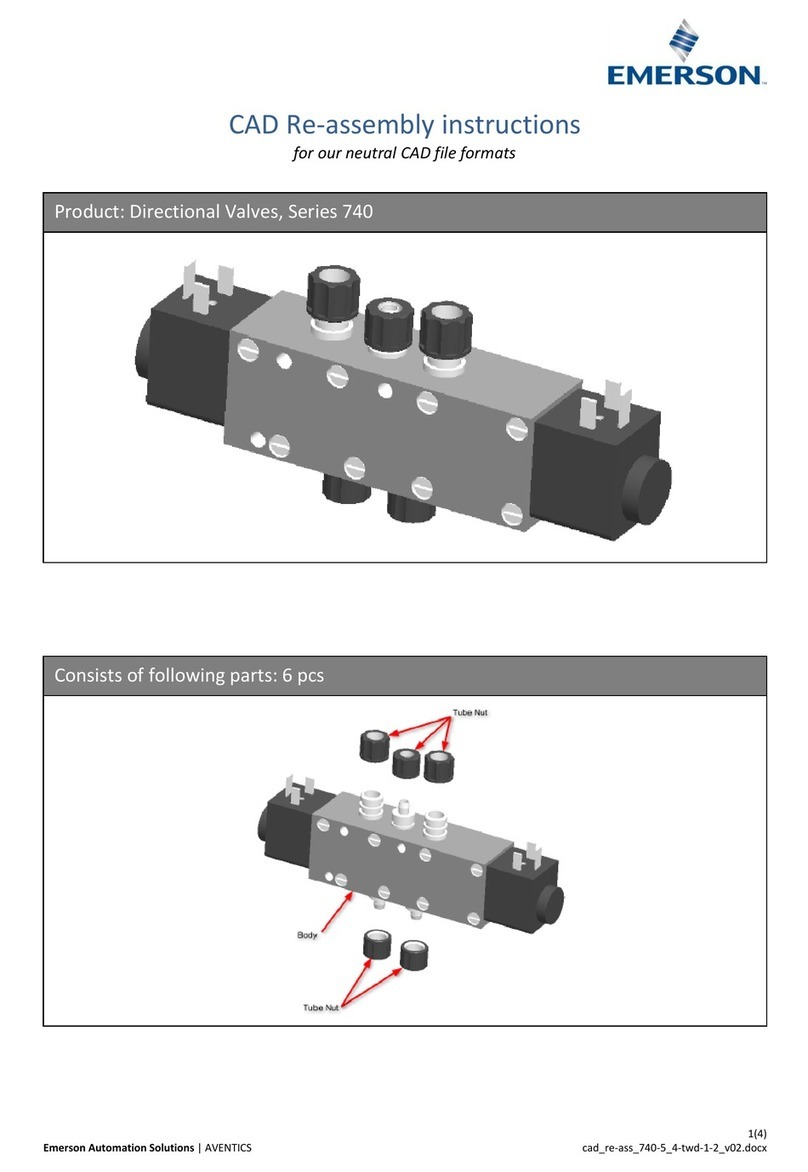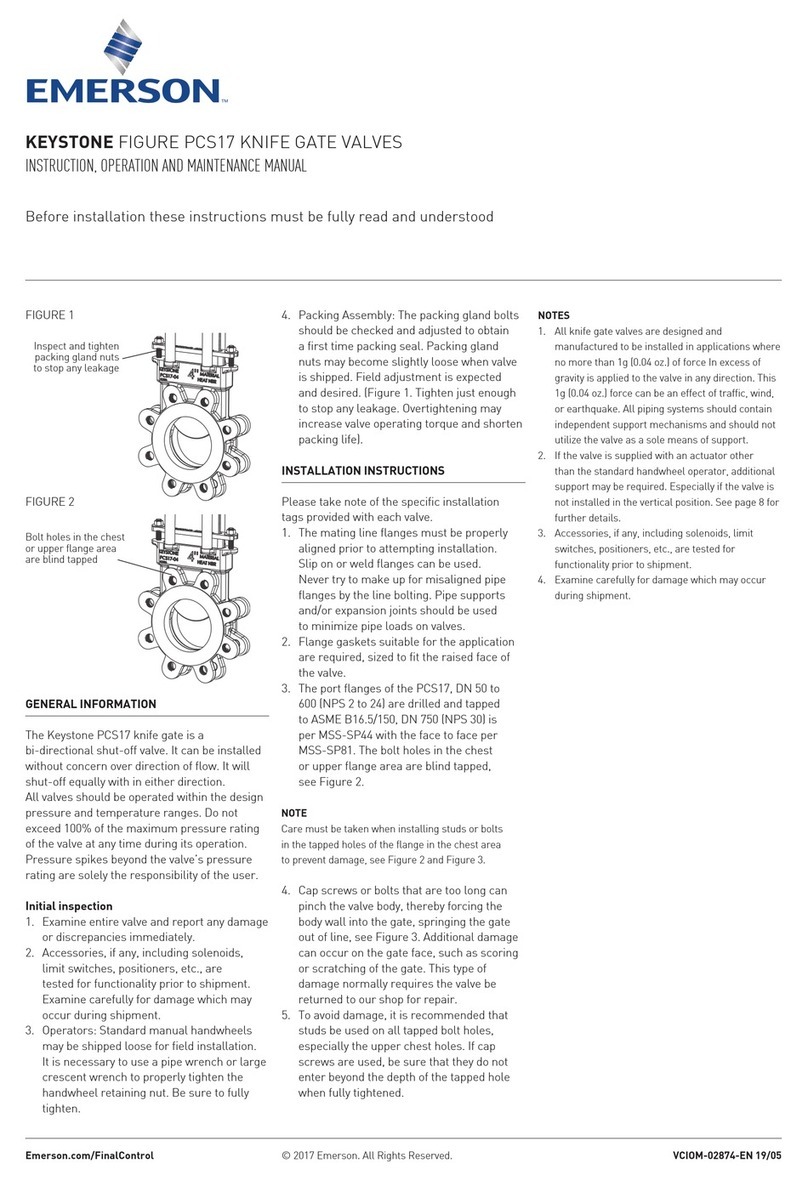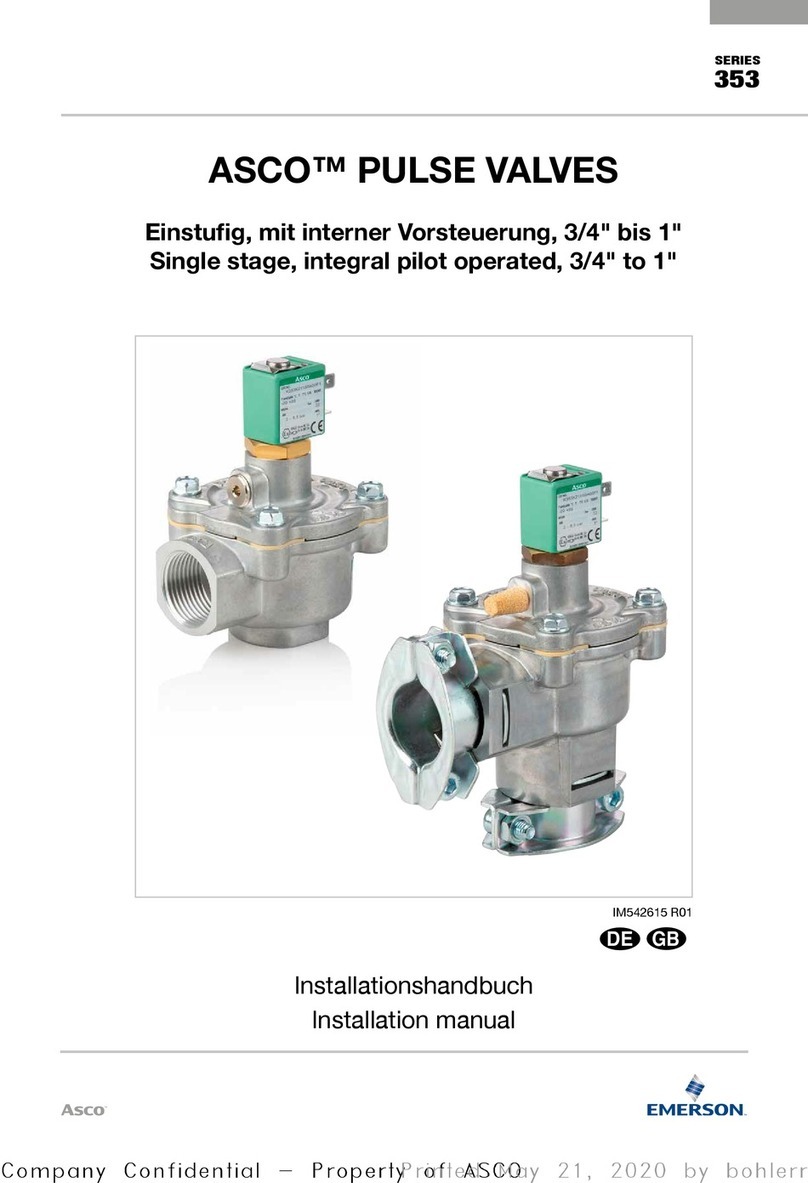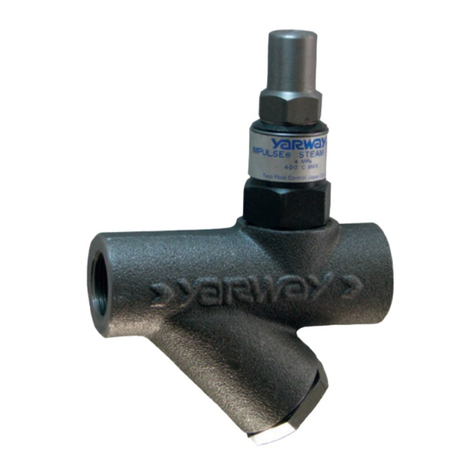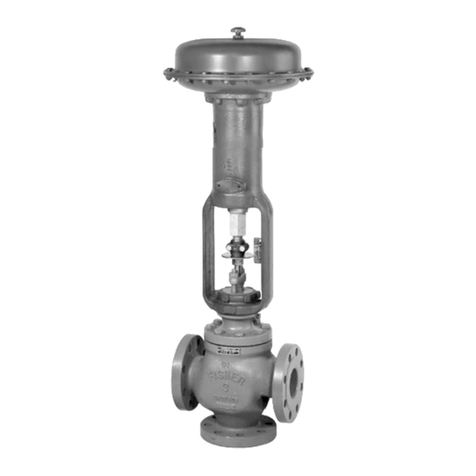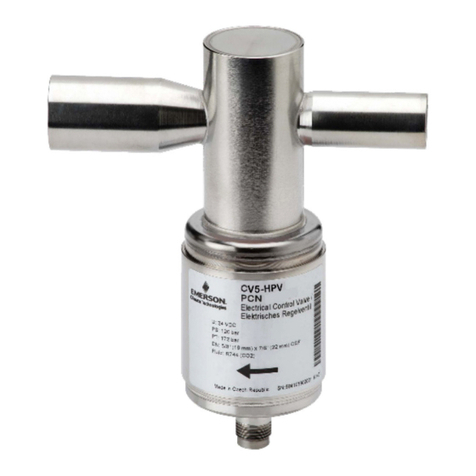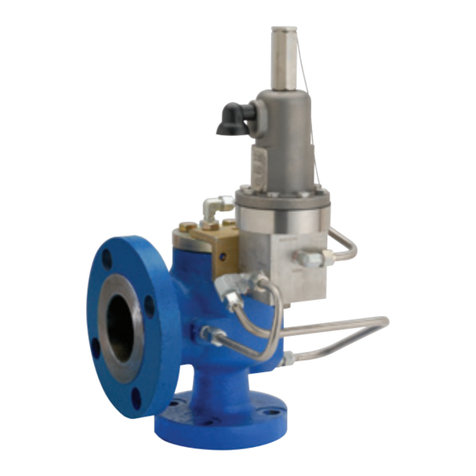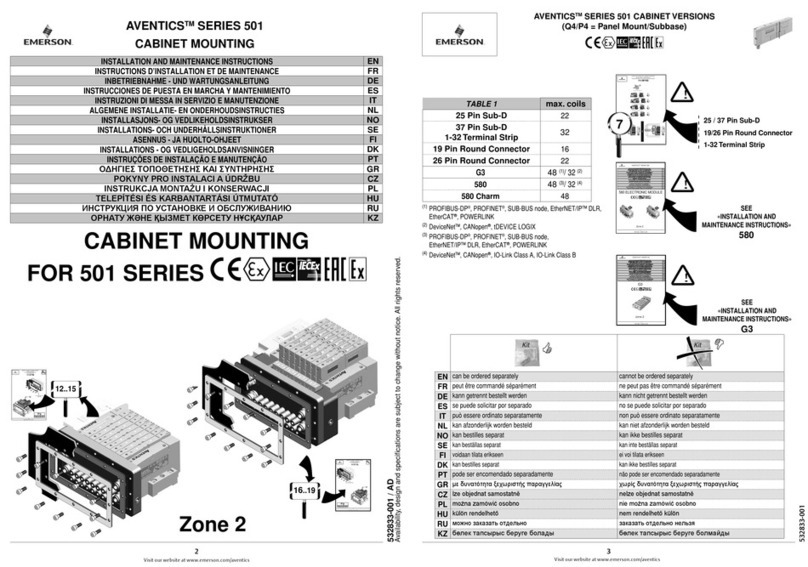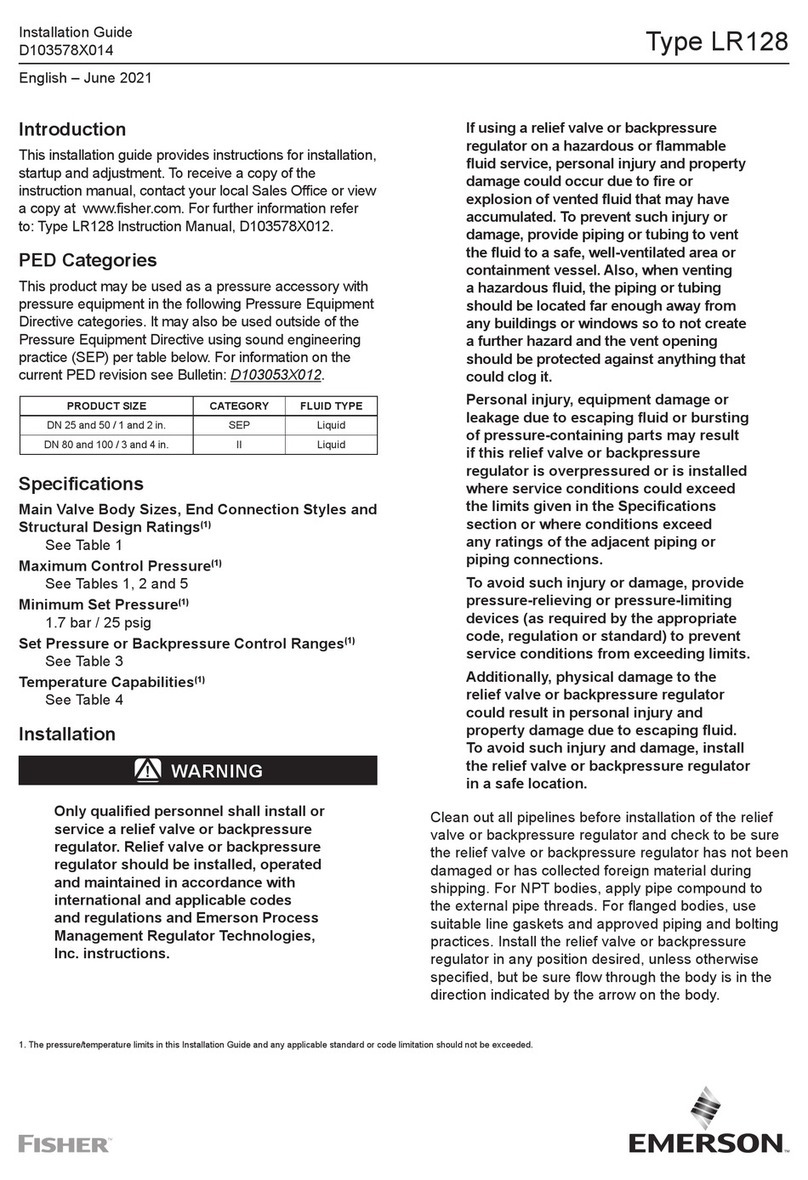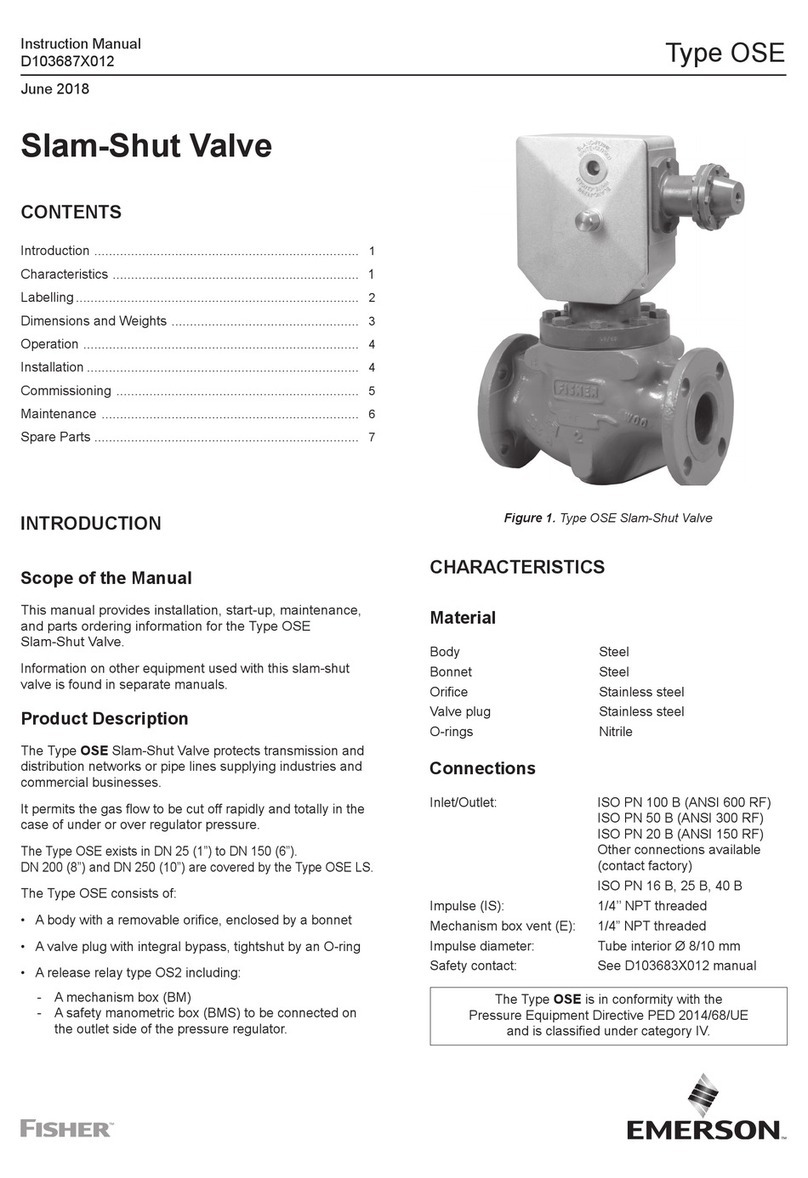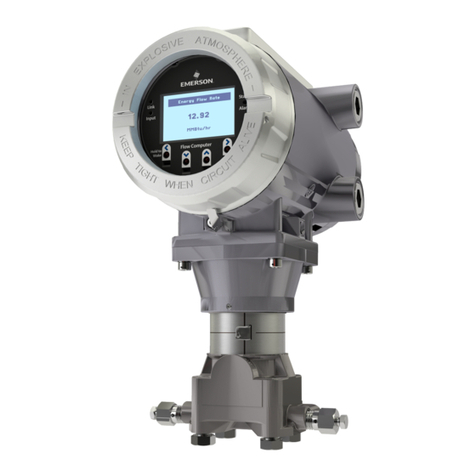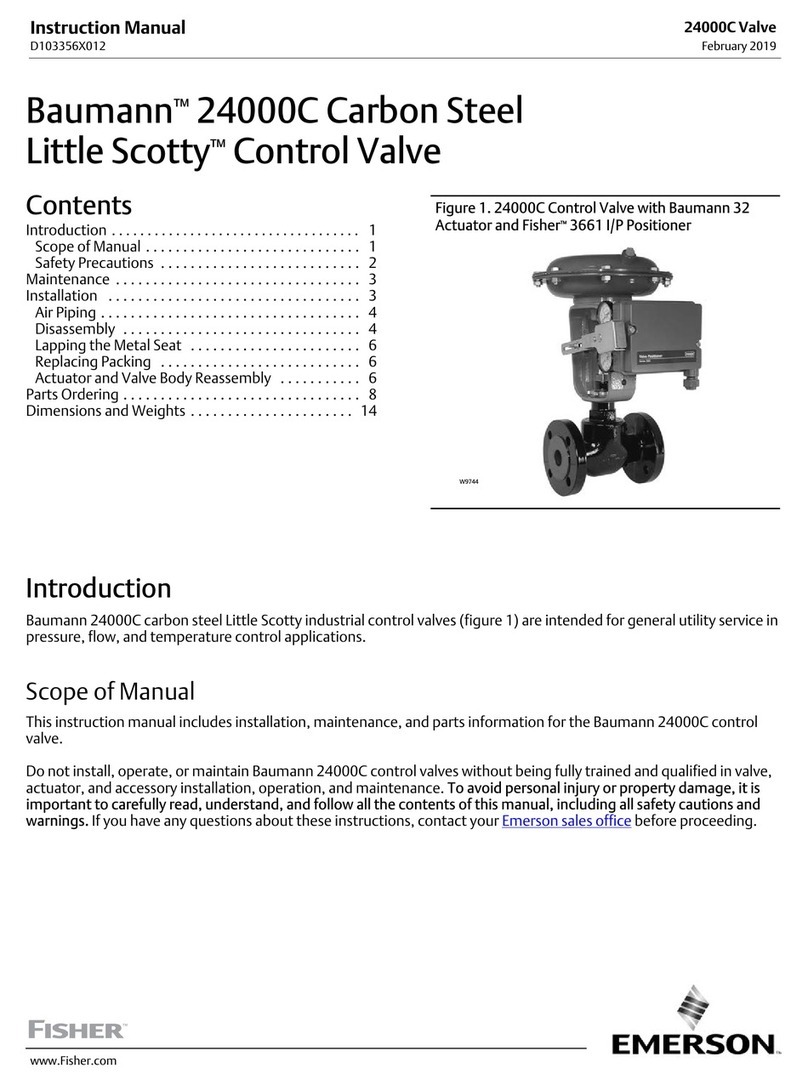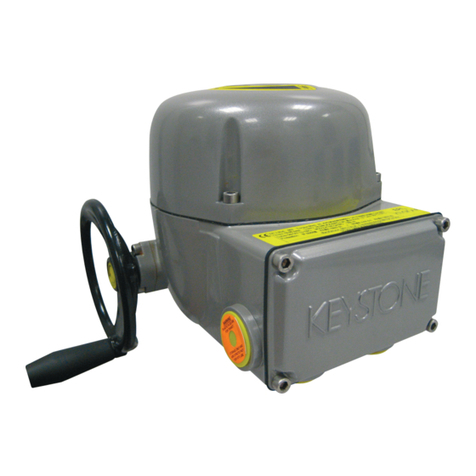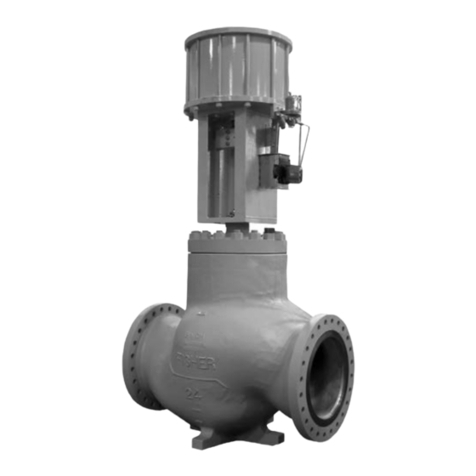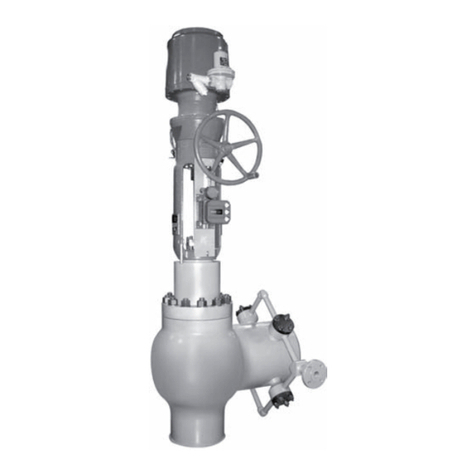
Instruction Manual
D104197X012
NPS 8 CHP Valve
September 2016
8
CAUTION
When lifting the bonnet (key 14), be sure that the valve plug and stem assembly (keys 3 and 4) remains on the seat ring
(key 7). This avoids damage to the seating surfaces as a result of the assembly dropping from the bonnet after being lifted
part way out. The parts are also easier to handle separately. Use care to avoid damaging gasket sealing surfaces.
WARNING
To avoid personal injury or property damage caused by uncontrolled movement of the bonnet, loosen the bonnet by
following the instructions in the next step. Do not remove a stuck bonnet by pulling on it with equipment that can stretch
or store energy in any other manner. The sudden release of stored energy can cause uncontrolled movement of the bonnet.
If the cage sticks to the bonnet, proceed carefully with bonnet removal and support the cage so that it will not fall
unexpectedly from the bonnet.
Note
The following step also provides additional assurance that the valve body fluid pressure has been relieved.
5. Hex nuts (key 12) attach the bonnet to the valve body. Loosen these nuts approximately 3 mm (1/8 inch). Then
loosen the body‐to‐bonnet gasketed joint by either rocking the bonnet or prying between the bonnet and valve
body. Work the prying tool around the bonnet until the bonnet loosens. If no fluid leaks from the joint, proceed to
the next step. If fluid leaks from the joint, the process pressure was not relieved from the valve as noted in the
Warning at the beginning of the Maintenance section in this manual.
6. Unscrew the hex nuts (key 12) and carefully lift the bonnet off the valve stem. If the valve plug and stem assembly
starts to lift with the bonnet, use a brass or lead hammer on the end of the stem and tap it back down. Set the
bonnet on a cardboard or wooden surface to prevent damage to the bonnet gasket surface.
7. Remove the valve plug (key 3), bonnet gasket (key 15) and three cage gaskets (key 16), seat ring (key 2), and the
seat ring gasket (key 17).
CAUTION
Inspect the seat ring, cage, bonnet, and body gasket surfaces. These surfaces must be in good condition, with all foreign
material removed. Small burrs less than approximately 0.076 mm (0.003 inch) in height (the thickness of a human hair) can
be ignored. Scratches or burrs that run across the serrations are not permitted under any conditions, as they will prevent
the gaskets from sealing properly.
8. Clean all gasket surfaces with a good wire brush. Clean in the same direction as the surface serrations, not across
them.
9. Cover the opening in the valve body to protect the gasket surface and to prevent foreign material from getting into
the valve body cavity.
10. Remove the packing flange nuts, packing flange, upper wiper, and packing follower. Carefully push out all the
remaining packing parts from the valve side of the bonnet using a rounded rod or other tool that will not scratch the
packing box wall.
11. Clean the packing box and the following metal packing parts: packing follower, packing box ring, spring or lantern
ring, and, for single arrangements of PTFE V‐ring packing only, special washer.
12. Inspect the valve stem threads for any sharp edges that might cut the packing. A whetstone or emery cloth may be
used to smooth the threads if necessary.
13. Remove the protective covering from the valve body cavity, and install the seat ring and cage using a new seat ring
gasket (key 17), bonnet gasket (key 15) and three cage gaskets (key 16). Install the plug, then slide the bonnet over
the stem and onto the studs (key 11).
